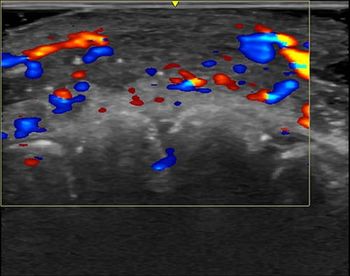
Going digital doesn't mean going crazy
All the major manufacturers and many of the small companies make a good PACS product. If your department is going digital, it is people who are going to screw you, and people should be your first consideration.
All the major manufacturers and many of the small companies make a good PACS product. If your department is going digital, it is people who are going to screw you, and people should be your first consideration.
The obvious key player is your department's PACS administrator. You want a real computer geek, someone who takes computers apart and rebuilds them at home for fun. This is because 80% of your problems as a radiologist will come from the generic box under your workstation, and 20% from the PACS. Any good computer person can learn about PACS, but when your station freezes up, you want the person who walks in, pushes you aside, does 30 seconds of voodoo, and you're up and running again.
The next key player is you, the radiologist. Look out for yourself, because you can be pretty sure no one else cares about your comfort, distractions, eye strain, back problems, or carpal tunnel syndrome. You want a reading area that is optimized for you. If you didn't attend the Society for Computer Applications in Radiology meeting this year, ask your local GE rep to get you a copy of "Digital eye for the analog guy." This DVD will help you plan a better reading room. And, after a year of using them, I highly recommend motorized workstations featuring pushbutton height control for the work counter and the monitors.
As usual, your biggest complaints will come from referring physicians. You have to anticipate and meet their needs before you turn on your PACS. We tried, but only partially succeeded, at this step. Physicians who use your images a lot, especially surgeons, neurologists, and pulmonologists, need your system administrator's help and guidance in rearranging their office workflow and the OR long before you go digital. Otherwise, you will waste a fortune in time and money printing films from your PACS for them to handle the old way.
Ideally, your hospital would budget funds to help your referring physicians convert their offices to digital. It would not require much money to generate a lot of goodwill. I suspect, given the cost of printing large-volume studies to film, that our department could have saved money if we bought a new Dell computer for every physician going digital with us. We could have offered them a nice monitor.
If you're installing PACS, you are probably converting to digital radiographs at the same time, with either computed or digital radiography. This is the most difficult part of the whole process. When you start doing digital radiographs, you should expect absolutely no agreement among anyone in the hospital about what looks best. Part of this stems from the inherent nature of radiologists to disagree over the subtleties of image quality. Another factor is the variation in monitors. Your technologists will be tweaking the images on monitors costing one-10th as much as the monitor you're using. The biggest problem is that none of the ways really experienced techs can maximize image quality
on film will work anymore. Everyone gets frustrated. When you check your vendors' references, ask users how they feel about the people the vendor sends to help with this process.
Our system is from GE. They have a wonderful woman named Susan Pollard who continually comes back to our department to refine and improve our digital images. If your vendor doesn't have a person like Susan, someone so good users specifically ask for her, going digital will mean going crazy.
Dr. Tipler is a private-practice radiologist in Staunton, VA. He can be reached by fax at 540/332-4491 or by e-mail at btipler@medicaltees.com.
Newsletter
Stay at the forefront of radiology with the Diagnostic Imaging newsletter, delivering the latest news, clinical insights, and imaging advancements for today’s radiologists.




























